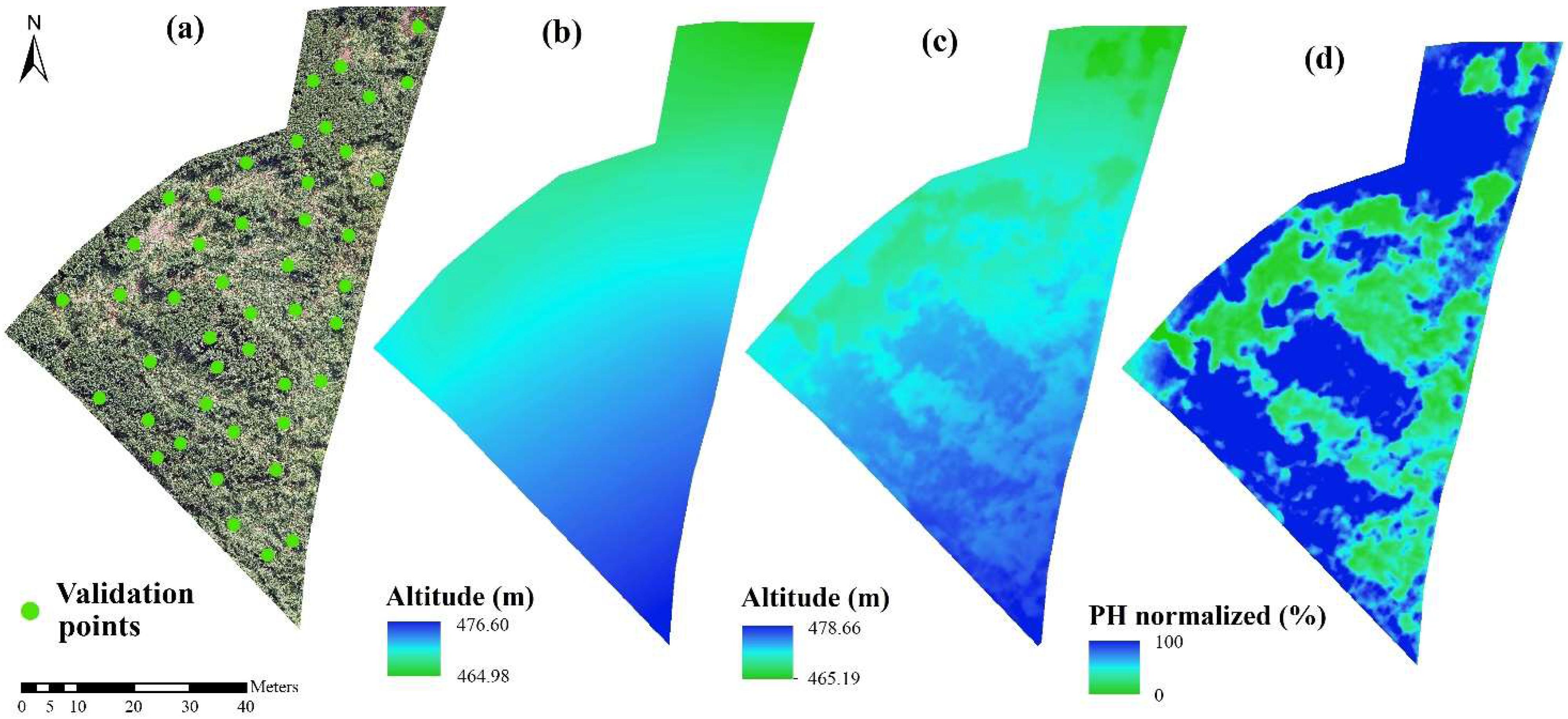ABSTRACT
A common agricultural problem in many regions of Brazil is maize lodging, as a consequence of strong winds and rain which impacts on crop growth and yield. However, collecting data using ground-based, manual field measurement methods is inefficient. An emerging tool is the Remotely Piloted Aircraft System (RPAS), capable of delivering spatial data with high resolution and flexible periodicity. In this study, the potential to detect the maize lodging using crop surface models derived from RPAS was assessed. Our RPA-based approach uses a quantitative threshold to determine lodging percentage. The threshold values of plant height, used to detect the occurrence of lodging, were based on fixed and variable values. The validation of percentage lodging was performed using the RGB orthomosaic. The derived lodging estimates showed a very high correlation to the reference data. High correlations were observed for the fixed threshold at 60% (R2 = 0.93, RSME = 8.72%) and the variable thresholds, Jenks natural breaks and iso-clusters (R2 = 0.92, RSME = 8.89% and R2= 0.92, RSME = 9%, respectively). This study demonstrated the potential of the use of this technique, reducing the subjectivity of ground-based evaluation and the laborious traditional technique of lodging inference.
KEYWORDS
Crop surface model; structure from motion; canopy height; RGB







